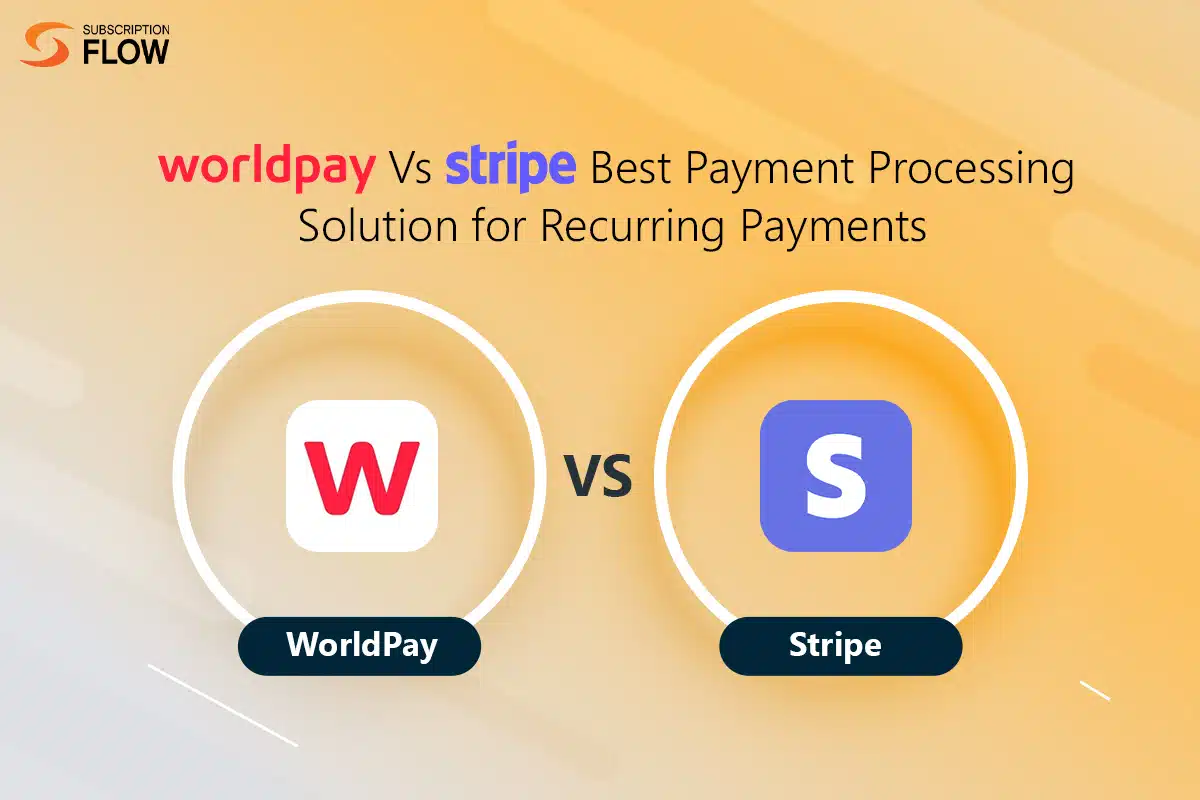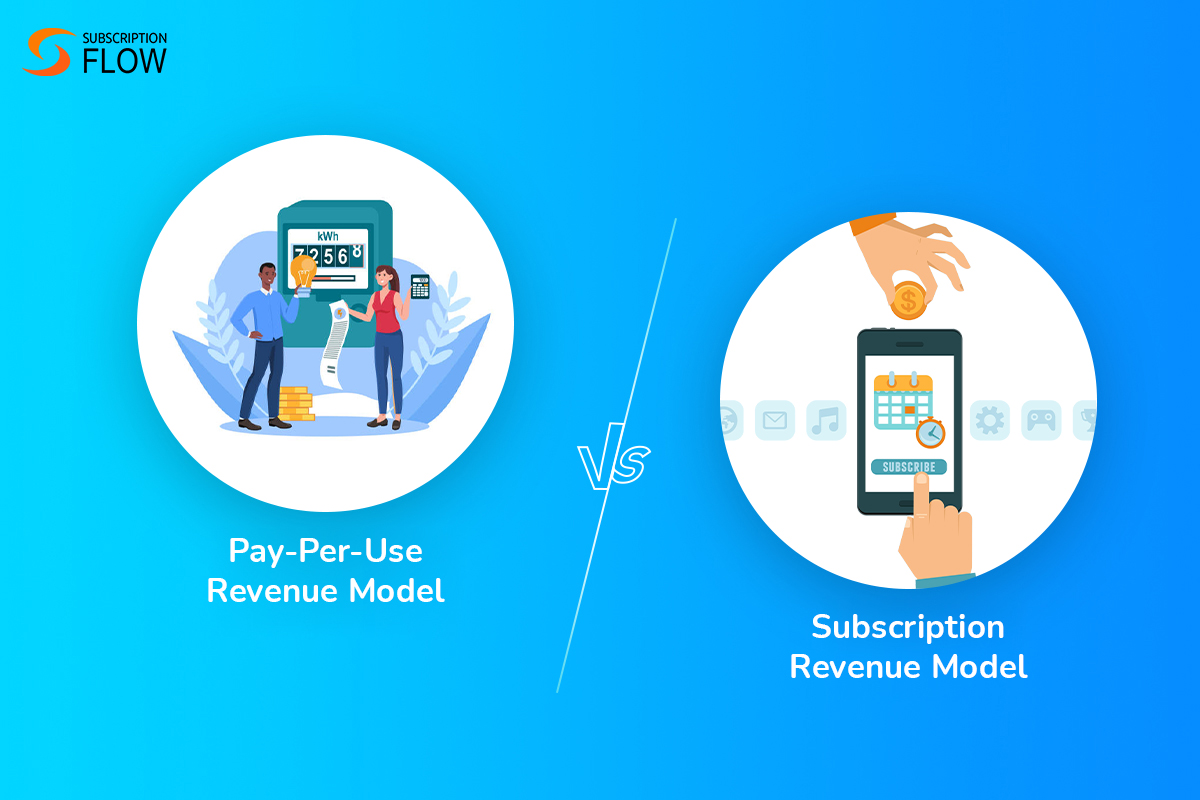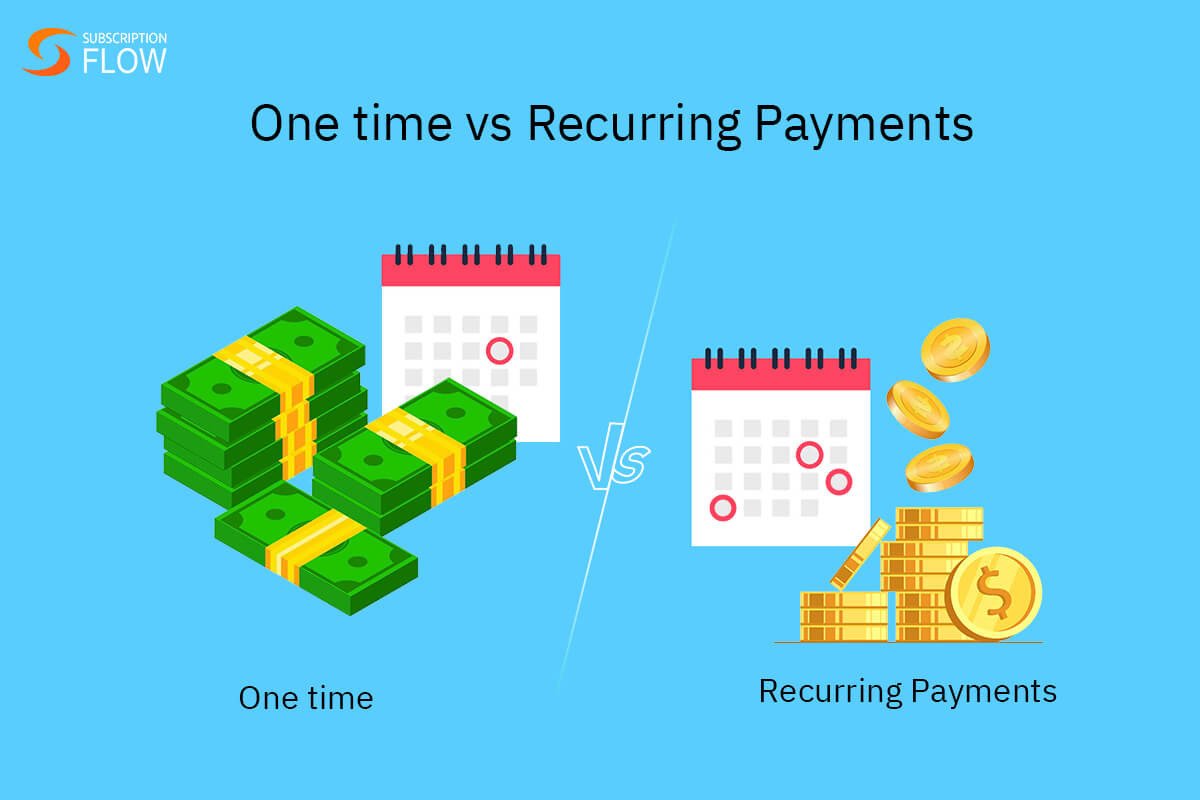
Worldpay Vs Stripe: Best Payment Processing Solution for Recurring Payments
Choosing the right payment processor is important, as it has a direct impact on the customer payment experience. It also greatly affects the business’s overall operational efficiency. That is precisely why businesses need payment processors that are fast and reliable, as well as scalable.
Worldpay and Stripe are two service providers that lead the payments industry today. They both offer advanced features that support seamless international payments, and subscription billing. But which one of the two platforms is the better match for accepting recurring payments?
Let’s find that out. In this article, we’ll present a Stripe vs Worldpay comparison where we will assess their major features, security measures, and fees. Make sure to read to the end to make an informed choice between the two.
Worldpay: Brief Overview
Worldpay is a renowned payment processor that helps large businesses process significant payment numbers. It supports online payments, card processing machines, point of sale systems, mobile payments, and more.
Worldpay facilitates transactions across approximately 120 currencies, and is present in 100 countries. Additionally, it facilitates a variety of alternative payment methods as well, thereby enabling businesses to acquire varied customer bases.
This service provider has been around for more than three decades, making it a reliable choice for enterprises.
Stripe: Brief Overview
Stripe is developer-oriented, and comes with flexible APIs to enable effortless integrations to third-party platforms. Similar to Worldpay, it also enables international transactions, and subscription billing.
It is available in 46 countries, and provides online payments in 135+ currencies. It also facilitates in-person payment solutions via Stripe Terminal (a POS platform that supports card reading machines, Tap to Pay on mobile, etc.).
How Worldpay Supports Recurring Payments
Here are the key features Worldpay offers subscription businesses:
- Recurring Billing
Worldpay enables automatic recurring payments by tokenization. When subscribers sign up for a subscription service, Worldpay enables business’s billing system to store the customer’s payment information by tokenizing it.
It then uses this token whenever the subscription payment is due, to automatically collect the payment.
- Hosted Payment Pages
The service provider allows businesses to link their websites with secure payment pages. When customers sign up, and need to pay to begin their subscriptions, they are directed to Worldpay’s hosted payment pages.
They can easily pay there by choosing from a number of payment methods. Worldpay saves their payment information for recurring payments in future.
- Varying Subscription Payment Setups
Businesses can use Worldpay’s Business Manager Portal to customize rules for subscription payments. For example, they can set their billing cycles. They can select weekly, monthly, bi-monthly, yearly, or custom billing cycles.
They can also set fixed subscription rates for automated billing. This way, Worldpay collects precise payment amounts every cycle. Moreover, businesses can also set up start and end dates in case of subscription trials, or limited time offers.
How Stripe Supports Subscription Payments
Here are the key features Stripe offers subscription businesses:
- Stripe Billing
This is Stripe’s specialized tool that caters to many forms of subscription payments including:
recurring payments on a monthly and yearly basis
tiered pricing
usage-based billing
proration
- Automated Invoicing
Stripe also supports subscription merchants by automating their invoice generation and transfer. These invoices can be customized as well for more personalized payment experiences.
- Dunning Management
The platform offers advanced dunning features as well such as automatic payment retries. Payment retries are attempted at optimal times to improve success rates.
- Hosted Customer Portal
Stripe hosts self-service portals for customers which they can use to access their subscription settings. They can change their subscription plans, and payment method details from there. They can also see their transaction history.
- Flexible Billing Cycles
Just like Worldpay, Stripe also offers a range of billing schedules to choose from. For example, weekly, monthly, quarterly and annually. They can also create customized billing cycles.
Worldpay Vs Stripe: A Feature-by-Feature Comparison
Now that we have a basic understanding of how Worldpay and Stripe support recurring payments, it is time to compare their key features. This comparison will help you analyze which one is the better fit for your business.
- Recurring Billing
Stripe: It supports this feature via Stripe Billing, a specialized product that offers advanced subscription billing models. These include usage-based billing, proration, tiered pricing, and more. Stripe automates billing from end to end.
Worldpay: It also supports recurring payments, but doesn’t entirely automate billing. It offers auto-recurring payments through tokenization, and natively supports fixed subscription charges per billing cycle. Users need integrations with other software to unlock advanced subscription billing options.
- Integrations with Third Party Platforms
Stripe: Due to its developer-friendly nature, Stripe is easy to integrate with other software. It is also easier to customize according to business needs.
Worldpay: This service provider is of a more traditional nature, and doesn’t support integrations as flexibly. It is more complicated to customize as well. However, because it doesn’t offer flexible APIs, it offers some built-in integration options, such as with e-commerce platforms. Businesses can easily access these pre-built plugins within Worldpay.
- Customer Portal
Stripe: Offers a hosted customer portal that customers can leverage to make modifications to their subscription plans. Subscribers can also use it to view their invoice history, and update payment information.
Worldpay: It doesn’t offer a customer portal of its own. It requires integration with software like SubscriptionFlow for this functionality.
- Smart Payment Retries
Stripe: Offers automated payment retries that follow an AI-powered schedule. Stripe attempts payment retries repeatedly until revenue is successfully recovered.
Worldpay: It doesn’t directly support dunning like Stripe. It relies more on the business’s billing platform for such features.
- Clear Pricing
Stripe: Offers more transparent pricing for online payments. It clearly outlines all the charges per transaction. Businesses can access Stripe’s pricing structure easily. For businesses with higher payment volumes, it offers custom pricing as well.
Worldpay: It offers more customized solutions and packages according to each business’s size and needs. This means that its pricing is custom too. There are no standard fees. This makes its pricing structure less transparent. Businesses have to directly get in touch with the Worldpay team to discuss charges.
- Payment Methods
Stripe: Offers a variety of payment methods including both advanced and traditional options. For instance, credit cards, debit cards, bank transfers (such as ACH), digital wallets (like Google Pay), BNPL, and more.
Worldpay: It also offers a range of payment options including, but not limited to credit/debit cards, BNPL options, ACH, and open banking. It supports a variety of local payment methods as well, such as WeChat Pay (in China), iDEAL (in Netherlands), SEPA Direct Debit (in Europe), etc.
- Quote and Invoice Generation
Stripe: Supports automated recurring invoicing. The system generates invoices and quotes automatically. Once quotes are finalized, they are seamlessly converted into invoices. These features make Stripe a good fit for subscription businesses.
Worldpay: Does not support automatic generation of either invoices or quotes. Businesses have to incorporate software like SubscriptionFlow for that.
- Setup Complexity
Stripe: It is easier to set up, as it is increasingly developer friendly.
Worldpay: A bit more complex to set up comparatively.
- International Payments Support
Stripe: Great global support, as it operates in 46 countries, and facilitates transactions in more than 135 currencies.
Worldpay: Also offers great global support, as it operates in more than 100 countries, and facilitates transactions in 120 currencies.
- Fund Transfer Speed
Stripe: Payments are processed and transferred in 2-3 business days normally.
Worldpay: Fund transfer is slower compared to Stripe.
- Subscription Management
Stripe: Allows customers to upgrade and downgrade their plans via the self-service portal. Stripe prorates customers’ recurring charges accordingly. It accurately applies refunds where necessary.
Worldpay: Needs integration to support these features. Worldpay primarily offers automatic recurring payment processing only. Advanced billing models and proration cannot be accessed without the right integrations.
Stripe Vs Worldpay Security Comparison
Both service providers support a variety of security measures including, but not limited to the following:
Stripe
- PCI DSS Level 1 Compliant: Stripe holds the highest security certification in the payments industry, that speaks for its reliability.
- Tokenization: This process refers to converting sensitive customer payment information into tokens. This prevents unauthorized users from accessing it.
- Fraud Prevention Radar: This tool intelligently detects suspicious and fraudulent activity, and prevents it.
- Data Encryption: Stripe encrypts user data both when it is stored in the database, and when it is transmitted.
Worldpay
- PCI DSS Compliant: Worldpay helps enterprise-level businesses to maintain compliance with customer data security standards.
- FraudSight: Similar to Stripe’s Fraud Prevention Radar, FraudSight also utilizes machine learning to detect suspicious transactions.
- Tokenization: Worldpay conducts secure recurring payment processing through tokenization.
- 3D Secure (3DS) Support: European businesses must be compliant with regulations such as PSD2. Worldpay offers 3DS that helps them comply with PSD2 as well.
Stripe Vs Worldpay Fees Comparison
Stripe
- Credit and Debit Card Transactions: Stripe charges 2.9% along with a fixed $0.30 for each transaction. This rate is fixed for the US cards.
- International Cards: These cards incur an extra 1% charge on top of the standard fee.
- Currency Conversion: This incurs another extra 1% on top of the standard and international card fees.
- Chargebacks: Each chargeback costs the business $15.
- Instant Transfers: Each instant payout costs 1% of the total transaction amount.
Worldpay
It is important to note that Worldpay’s fees are not standard like Stripe fees. They vary a lot based on multiple factors, such as payment method type and business volume, etc.
- Credit and Debit Card Transactions: Fees depend upon the card type. Each card type, such as standard credit card and reward credit card comes with its own unique costs. The additional fixed fee of $0.20 generally remains the same for all card types.
- Monthly: Unlike Stripe, businesses have to pay monthly fees, such $15-$25 for PCI compliance.
- International Cards: These fees vary, and are typically higher than those charged by Stripe.
- Currency Conversion Fees: These fees also vary a lot.
- Chargebacks: Each chargeback costs the business $20.
- Instant Transfers: Worldpay doesn’t offer instant transfers. Instead it offers the Same Day Funding option. This option costs businesses $9.95 each month, regardless of how many same day transfers are made in a month.
Made Your Pick Yet?
If you are still confused, here’s a quick rundown for you:
Both Stripe and Worldpay excel in processing recurring transactions. Worldpay is a well-known solution among enterprises, as it facilitates smooth global transactions, and has long-standing ties with major banks.
Stripe is more popular among modern subscription businesses looking for advanced recurring billing solutions. It supports features like usage-based billing, proration, and smart payment retries.
If you a subscription business that seeks innovation, and recurring billing flexibility, Stripe is the better fit for you. On the other hand, if you are an international enterprise looking for customized pricing options to achieve higher profitability, then Worldpay might suit you better.
How SubscriptionFlow Helps You
Stripe and Worldpay both act as payment processors primarily. SubscriptionFlow is a specialized platform that integrates with both Stripe and Worldpay to unlock efficient recurring billing.
Businesses leverage our smooth integration to access advanced billing logic, intelligent revenue recovery, and expert subscription management.
Sign up with SubscriptionFlow today, and start managing your recurring payments expertly.










